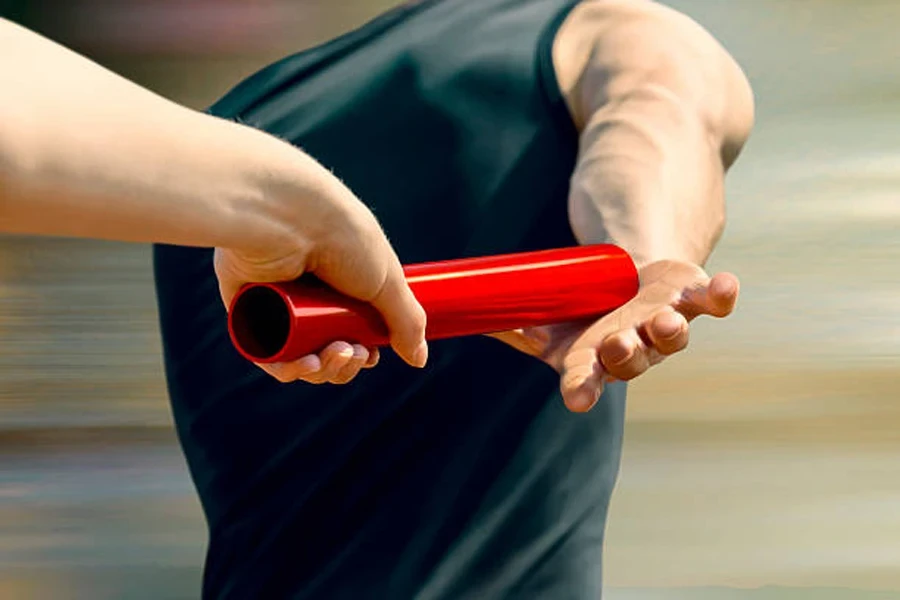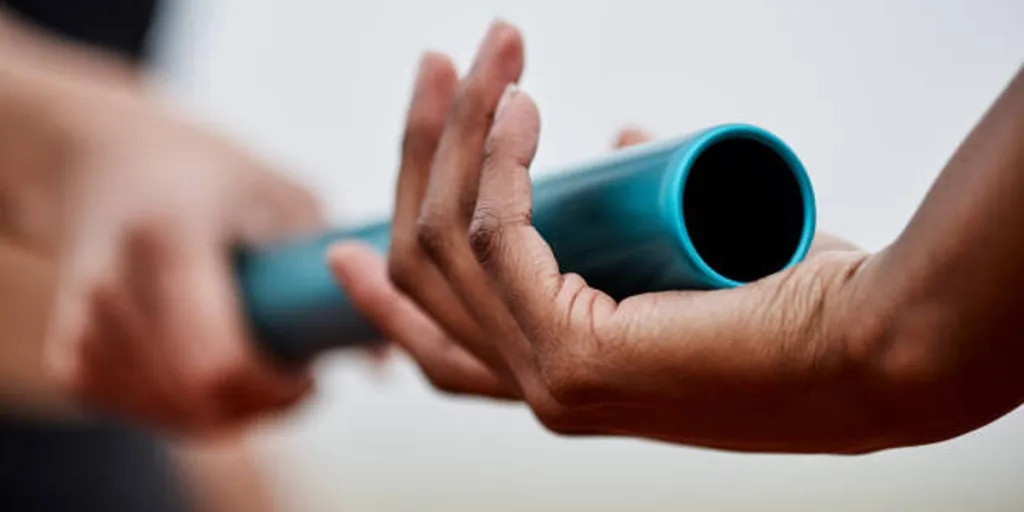The relay baton plays an important role in all types of relay races and is one of the most important pieces of equipment that will be used. Choosing the right relay baton depends on a number of features such as the weight, grip, material, and overall design and having the wrong one can seriously impact a team’s performance.
This guide will look at the key features of each type of popular relay baton, diving into what makes them an essential component to relay races and how choosing the best relay baton is vital to success on the running track. Keep reading to learn all about relay batons.
Table of Contents
Global market value of track and field equipment
Best relay baton for runners
Conclusion
Global market value of track and field equipment

Track and field has seen a significant increase in participants in the past decade, with everyone from school kids to mature adults taking part in some capacity. It’s considered to be a very accessible sport and track and field events are now being broadcast worldwide on a regular basis.

With the rise in popularity of the sport, the track and field global market value is also growing at a rapid rate. Consumers are on the lookout for the latest equipment, such as running shoes, to help them raise their level and perform at maximum capacity. For example, the market value of track and field spikes is expected to grow by a compound annual growth rate (CAGR) of 2.9% until 2025, bringing the value up to over USD 16.5 billion.
Best relay baton for runners

Relay batons are a simple piece of track and field equipment that can have a big impact on the outcome of a relay race. They’re available in different materials and each version offers something different to the runners, whether they be professional athletes or school kids running in gym class.

According to Google Ads, “relay baton” has an average monthly search volume of 6600 with the most searches coming in March and April with 8100 searches per month. Between August and January, over a 6 month period, searches increased by 18%.
When looking at the different types of relay batons available to consumers, Google Ads shows that “wooden baton” is the most searched for with 2400 monthly searches. This is followed by “metal baton” with 1600 searches, “plastic baton” with 320 searches, and “carbon fiber baton” with 90 searches. Keep reading to learn about their key features and what makes them the best relay batons.
Wooden baton

The wooden relay baton isn’t typically used for professional events but it’s a popular choice for special occasions or commemorative races. These batons are tied to tradition and evoke a sense of nostalgia towards the historical roots of relay races. They’re crafted from sturdy and durable wood, typically birch, hickory, or ash, and they’re smooth to the touch to prevent splinters.
Due to the dense nature of wood these batons are heavier than other styles which can have a big impact on the handling of the baton during a race. They offer a unique feel due to the natural material used which is why they are a popular choice for special events.
Since wooden batons will generally only be used for a small amount of time they’re known for their durability but they aren’t able to withstand stress as much as carbon fiber, for example.
Overall, wooden relay batons are a good option for adult runners who are participating in commemorative events or special occasions. Due to their weight, younger children should avoid using in case of injuries as should Olympic athletes and other professional runners who need a lighter material to run with.
Metal baton

The metal baton is the best relay baton option for competitive runners and professional athletes. They are also one of the most popular choices for school races as well as college track and field events.
This baton is made from a lightweight metal such as aluminum that provides durability and lightness when being handled. Due to the lightweight nature of this baton, runners are able to generate an efficient handoff during a race.
As with all types of relay batons, metal batons must adhere to the standard dimensions set out by the International Association of Athletics Federations (IAAF) which ensures consistency. The smooth surface of metal batons allows for a smooth transition and minimizes the risk of injury.
Consumers may also opt for a metal baton that has a textured grip built into the design, especially in harsh weather conditions. This type of relay baton is an essential tool for athletes at the top of their game and is widely accepted for all races globally.
Plastic baton

Plastic batons are designed for use in school events or for complete beginners. They’re ideal for younger children who are just learning how to run relay races as they are less likely to cause injury and are very lightweight.
They allow runners to develop their relay skills in a safe and affordable way thanks to the lightweight design and accessibility of the batons. Most plastic batons are made of a polycarbonate material which makes them lightweight as well as durable, something especially important if they’re being used in schools.
Despite these batons being used by younger runners the size remains the same as their metal counterpart which allows for consistent competition at all levels. This also means the transition from plastic to metal in the future will be considerably easier.
What consumers enjoy about plastic batons is that they are easy to maintain and clean, they’re safe for all ages to use, and they come in a variety of colors which makes them more appealing to the younger generations. As far as affordable and durable relay batons go, plastic batons are the best option.
Carbon fiber baton

The carbon fiber relay baton is quickly becoming a popular alternative to metal batons by consumers who want the latest technology. These batons can be used in elite competitions although they are not as widespread as metal batons just yet but they are a good material to experiment with.
They’re even more lightweight than metal batons which reduces the mass during handoffs, allowing for quicker exchanges and a faster running pace. These batons are made of composite materials that combine with carbon fiber to enhance the stiffness and strength of the baton.
They’re incredibly durable and highly resistant to wear and tear over time – even in harsh running conditions. Compared to metal batons, these batons offer a higher level of stiffness that aids in the handoffs.
Carbon fiber batons are also visually appealing with a sleek design and smooth finish paired with an aerodynamic profile that minimizes air resistance during the relay race. These batons are at the forefront of track and field innovations so they’re popularity is only set to increase over the next few years in elite races.
Conclusion

Relay batons have a simple design but there are various materials to consider that each appeal to different runners and situations. Some relay batons, like those made of wood and plastic, are meant for recreational use or special occasions rather than high-performance level races. Others, such as metal and carbon fiber batons, are designed with elite runners in mind and carry specific features that can enhance the running experience.
Overall, the best relay baton depends on the individual and what circumstances they’ll be running in. The future of track and field looks bright, and relays are one of the most popular aspects of track and field. In the coming years, consumers will be expecting more advanced technologies to be incorporated into track and field accessories such as relay batons.





 বাংলা
বাংলা Nederlands
Nederlands English
English Français
Français Deutsch
Deutsch हिन्दी
हिन्दी Bahasa Indonesia
Bahasa Indonesia Italiano
Italiano 日本語
日本語 한국어
한국어 Bahasa Melayu
Bahasa Melayu മലയാളം
മലയാളം پښتو
پښتو فارسی
فارسی Polski
Polski Português
Português Русский
Русский Español
Español Kiswahili
Kiswahili ไทย
ไทย Türkçe
Türkçe اردو
اردو Tiếng Việt
Tiếng Việt isiXhosa
isiXhosa Zulu
Zulu